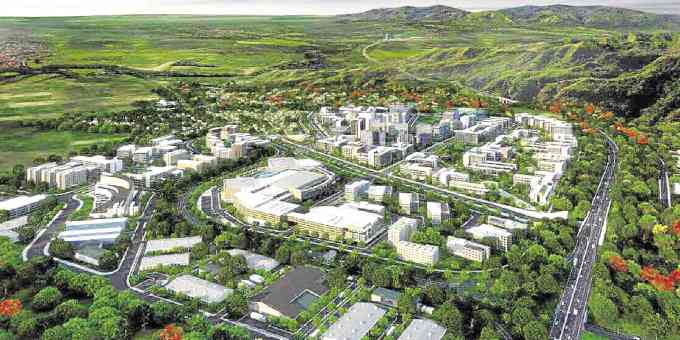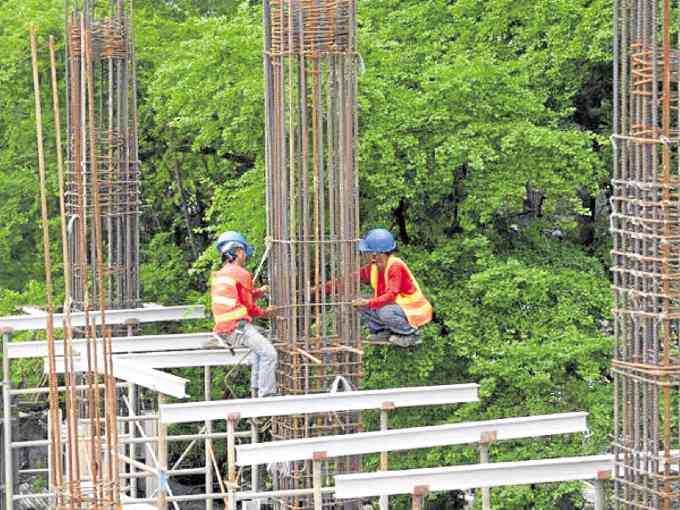Aggresive infra plan to sustain PH construction boom
The figures are staggering.
Over the course of President Duterte’s six-year term, some P7 trillion (about $144 billion) are expected to be poured in the country’s infrastructure sector—reportedly the “boldest, most ambitious… in history.”
Some P860 billion had, in fact, been programmed by the administration for public infrastructure for this year alone.
The target for 2017 was to ramp up infrastructure spending to 5.4 percent of the country’s gross domestic product (GDP)—twice the 2.6 percent average seen in the past six administrations, spanning across the last 50 years.
For the Philippines and its people, this meant having more railways, urban mass transport systems, airports and seaports; new bridges and roads; as well as better and smarter cities.
The economy is, of course, stands to benefit as well. As the International Monetary Fund (IMF) had put it, a “sustained increase in public infrastructure spending to 5 percent of GDP would add a total of 5 to 6 percent to GDP after 15 years.”
For the local construction sector and other related industries, this aggressive public spending could only spell better and bigger prospects for growth and expansion, and signal a brighter year ahead.
Sustained growth
According to the Philippine Infrastructure Report by BMI Research dated January 1, the country’s construction sector is well poised to sustain a healthy growth up to 2021, on the back of this administration’s infrastructure plan.
Forecasts by BMI Research—a Fitch Group company that provides independent analysis and forecasts on countries, industries and financial markets—showed that the Philippine construction sector may grow from P1.09 trillion in 2017 to P1.73 trillion by 2021.
The sector’s contribution to GDP is also seen to grow steadily from 6.8 percent this year to 7.3 percent by 2021.
“We are maintaining our positive outlook for the Philippines’ construction industry as it receives substantial support in the form of President Rodrigo Duterte’s multi-billion dollar infrastructure investment plans as well as his aim to accelerate PPP (public-private partnership) projects and develop rural regions of the country,” BMI said in its report.
“President Duterte’s plan to spend more than P7 trillion in infrastructure between 2016 and 2022 will provide strong support to the construction industry, although we note bureaucratic obstacles which have previously weighed on project progression, particularly in the transport sector, will remain a hurdle,” it further stated.
According to BMI Research, President Duterte’s tilt toward China is expected to “drive greater investment and involvement from Chinese firms in infrastructure, with $24 billion worth of financing and investment deals signed after his state visit to Beijing in October last year.
It also pointed out that Mr. Duterte’s promise to honor existing PPP contracts would “bode well for policy continuity, while his pledge to review the framework will help to speed up future projects.”
As such, BMI Research has forecasted a “robust expansion in the Philippine construction industry, which we expect to record real growth of 9 percent in 2017 and 8.5 percent in 2018.”
Build, build, build
This proposed massive infrastructure build-up is seen as a crucial cornerstone to the Duterte administration’s 10-point socio-economic agenda as it was expected to help solve the country’s lingering concerns, particularly on unemployment, high prices, and traffic woes.
Apart from those that had been approved last year, some of the infrastructure projects being eyed by this administration included:
Santa-Monica-Lawton-Bonifacio Global City (BGC) link bridge, which is expected to divert 100,000 vehicles off Edsa;
UP-Miriam-Ateneo viaduct which will reduce by 80 percent the travel time from Katipunan to C.P. Garcia Ave.;
Iloilo-Guimaras-Negros-Cebu link bridge;
Davao City Bypass construction project, which will reduce the travel time from Digos, Davao del Sur to Panabo, Davao del Norte to 45 minutes from the current two hours;
North Luzon Expressway (NLEx)-South Luzon Expressway (SLEx) Connector Road, which will cut travel to Alabang from Balintawak to 30 minutes;
Manila-Clark Railway, which guarantees a one-hour travel from Metro Manila to Clark International Airport;
Metro Manila Bus Rapid Train (BRT) system;
Mindanao Railway, which will cut the time it takes to go from Davao to Surigao and Cagayan de Oro to only two hours, thus allowing a faster and cheaper alternative to deliver agricultural products;
Regional airport and roll-on, roll-off developments;
Clark International Airport new terminal building to decongest the NAIA; and the
Clark Green City, a 9,450-hectare area within the government-owned Clark Special Economic Zone that is touted to become the country’s first smart, green and disaster-resilient metropolis.
The target of the administration was to complete all these projects in five years’ time, or before Mr. Duterte steps down from office in 2022.
Indeed, these are ambitious infrastructure goals that the government is seeking to undertake—one that is closely being watched by the local and foreign investor community as this could have a significant impact on the country’s attractiveness as an investment destination, and by many Filipinos who are awaiting whether Mr. Duterte can truly deliver on his campaign promise that “change is coming.”
















